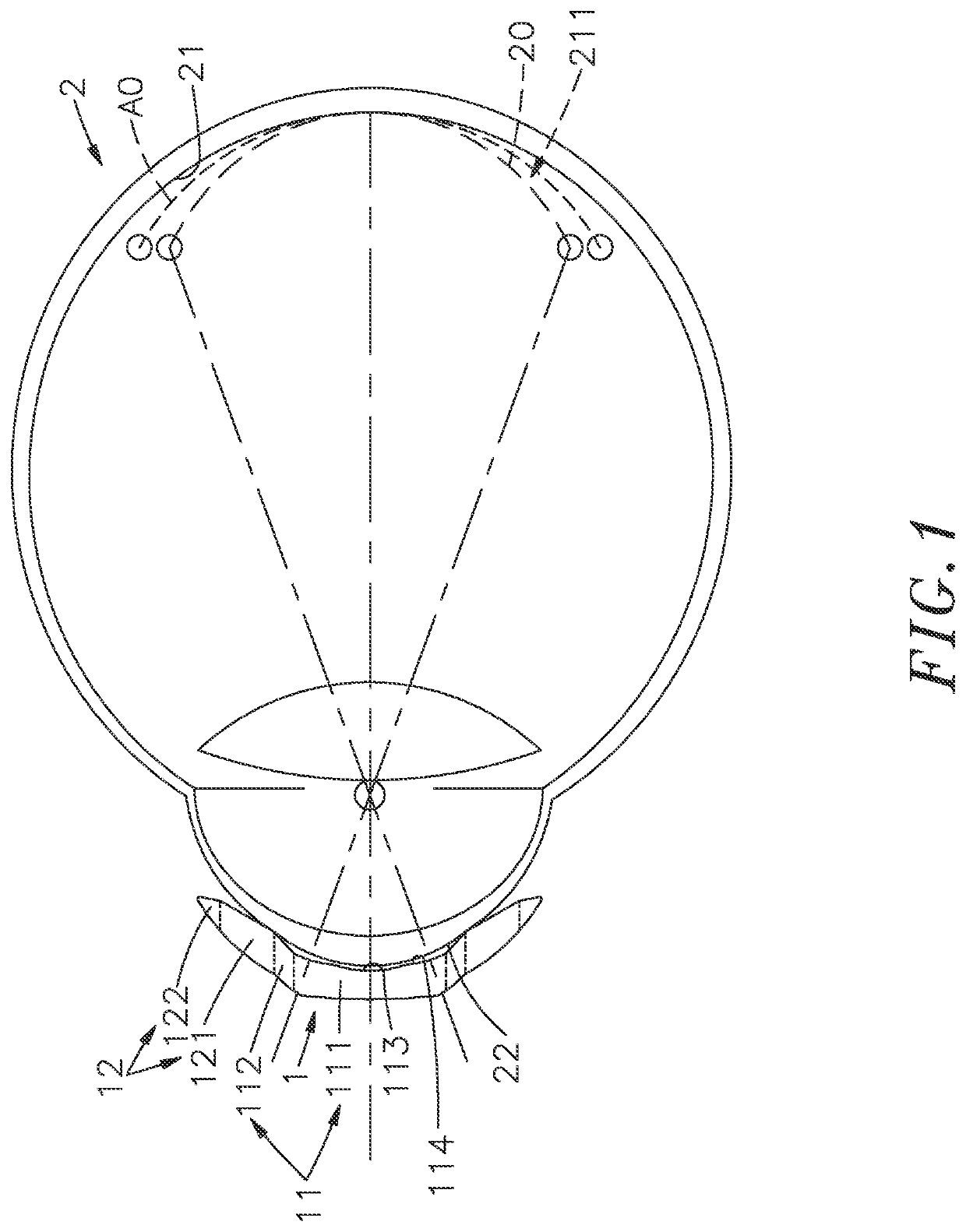Orthokeratology lens using aspheric e-value to control tear height to slow down the growth rate of the eyeball
a technology of corneal edema and aspheric e-value, which is applied in the field of corneal keratology, can solve the problems of poor myopia control, epithelial cells cannot be effectively squeezed, and the power of myopia will continue to increase, so as to reduce manufacturing errors and improve product yield
- Summary
- Abstract
- Description
- Claims
- Application Information
AI Technical Summary
Benefits of technology
Problems solved by technology
Method used
Image
Examples
Embodiment Construction
[0014]Referring to FIGS. 1, 2 and 3, as shown in the drawings, it can be clearly seen that the orthokeratology lens of the present invention uses aspheric E-value to control tear height to slow down the growth rate of the eyeball. The lens 1 is an orthokeratology lens and the surface is aspheric. The lens 1 comprises a treatment zone 11 through which light passes to image at the retina 21 of the eyeball 2, and a positioning zone 12 of the non-visual area outside the treatment zone 11.
[0015]The treatment zone 11 comprises a base curve 111 (BC) whose eccentricity (E-value) can be between −4 and 4, and a reverse curve 112 (RC) formed on the outside of the base curve 111 to form a gap between the base curve 111 and the eyeball 2 for the accumulation of tears.
[0016]The positioning zone 12 comprises an alignment curve 121 that allows the lens 1 to be firmly fixed on the eyeball 2, and a peripheral curve 122 (PC) located outside the alignment curve 121.
[0017]The base curve 111 eccentricity...
PUM
 Login to View More
Login to View More Abstract
Description
Claims
Application Information
 Login to View More
Login to View More - R&D
- Intellectual Property
- Life Sciences
- Materials
- Tech Scout
- Unparalleled Data Quality
- Higher Quality Content
- 60% Fewer Hallucinations
Browse by: Latest US Patents, China's latest patents, Technical Efficacy Thesaurus, Application Domain, Technology Topic, Popular Technical Reports.
© 2025 PatSnap. All rights reserved.Legal|Privacy policy|Modern Slavery Act Transparency Statement|Sitemap|About US| Contact US: help@patsnap.com



